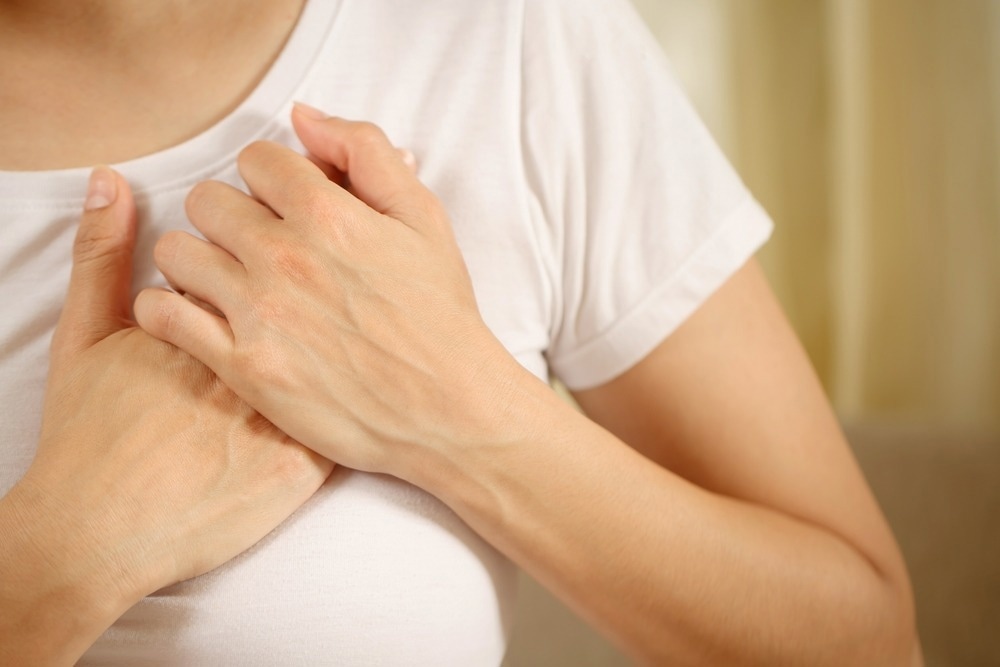In a recent study published in Immunity, researchers surveyed a comprehensive range of outcomes in patients diagnosed with myocarditis after coronavirus disease 2019 (COVID-19) vaccination in the United States (US). They followed up with these adolescents and young male patients after they received a messenger ribonucleic acid (mRNA) platform-based COVID-19 vaccine for a minimum of 90 days from the onset of myocarditis.

Background
By July 2022, the US Vaccine Adverse Events Reporting System (VAERS) had reports of over 1,500 cases of myocarditis with onset after mRNA COVID-19 vaccination. Systemic reviews suggested the risk of myocarditis was highest in adolescents and young males after a second vaccine dose. However, in most cases, symptoms resolved symptoms shortly after discharge from a short hospital stay. However, there is a paucity of evidence of mid-term prognoses for adolescents and young adults diagnosed with myocarditis after mRNA COVID-19 vaccination.
About the study
The present study used a two-component telephone survey to assess patients’ myocarditis outcomes between August 24, 2021, and January 12, 2022.
The first survey component ascertained quality of life (QoL), previous medical history, and need for myocarditis medication. In addition, it enquired about their clinical symptoms two weeks before the survey date or if they missed work. These clinical symptoms encompassed chest pain, shortness of breath, fatigue, palpitations, hospitalizations, and days missed at school or work in the two weeks before the survey.
Following myocarditis diagnosis, they assessed whether patient’s health across five parameters – self-care, pain, mobility, ability to do daily activities, and anxiety or depression, using the EuroQol 5-dimension, 5-level (EQ-5D-5L) questionnaire. The researchers compared the patients' EQ-5D-5L survey responses with published EQ-5D-5L survey responses. It helped them understand how these responses differed before and during the COVID-19 pandemic.
The QoL questionnaire had five levels of response, in which patients could give dichotomized responses. Severity level 1 indicated no problem, whereas severity levels 2-5 indicated the ‘n’ number of clinical symptoms of myocarditis. The patient self-rated their overall health using the EuroQol visual analog scale (EQ-VAS). Its scores ranged from 0 to 100, which indicated worst and best health, respectively.
The second survey component ascertained the patient’s cardiac health and functional status. Follow-up cardiac assessments covered cardiac biomarkers, cardiac magnetic resonance imaging (MRI), echocardiograms, troponin levels, stress tests, ambulatory rhythm monitoring, and electrocardiograms (ECGs). The healthcare providers updated the researchers about the patient's cardiac or myocarditis recovery status. They also informed the researchers whether these patients had previous severe acute respiratory syndrome coronavirus 2 (SARS-CoV-2) infection.
The team compared the demographic and clinical characteristics of survey respondents with non-respondents. Additionally, they compared their healthcare provider, geographical census region, age, gender, first ECG results, and race/ethnicity. Finally, the researchers performed descriptive analyses to determine frequencies, percentages, means, and standard deviations (SDs) to characterize myocarditis cases.
Study findings
The researchers analyzed 519 patients aged 12–29 who met a pre-specified case definition for myocarditis per the Centers for Disease and Prevention criteria. Of the 393 patients with a healthcare provider assessment, 320 had recovered from myocarditis, and their QoL measures were similar to pre-pandemic levels and better than QoL measures of the general US population. However, no diagnostic test or clinical symptoms appeared to be associated with recovered status.
Fewer patients with myocarditis reported anxiety or depression than did individuals during the pandemic (46% vs. 60·2%). Further, nearly 1% of patients had the same cardiac status as the initial myocarditis diagnosis. Consistent with this finding, another recent report demonstrated better outcomes for COVID-19 vaccine-related myocarditis and a more rapid cardiac recovery in individuals under 21.
In a small subset of 151 patients, initial cardiac MRI at diagnosis was normal; however, follow-up MRI was abnormal in 54% of participants. Of 151, 71 patients had residual late gadolinium enhancement, indicating myocardial scarring in follow-up cardiac MRIs. One possible explanation is that clinical findings in these patients continued to evolve after diagnosis. Another reason could be that different healthcare providers did the initial and follow-up cardiac imaging and arrived at different interpretations.
Conclusions
The study showed that while myocarditis was rare after mRNA COVID-19 vaccination, those who experienced it had potentially serious manifestations. Healthcare providers considered most patients recovered within 90 days; yet, nearly 50% of them self-reported chest pain, 25% of whom had to be prescribed cardiac medications. Therefore, continual monitoring and assessment of myocarditis are needed after mRNA COVID-19 vaccination.
- Kracalik, I. et al. (2022) "Outcomes at least 90 days since onset of myocarditis after mRNA COVID-19 vaccination in adolescents and young adults in the USA: a follow-up surveillance study", The Lancet Child & Adolescent Health. doi: 10.1016/s2352-4642(22)00244-9. https://www.thelancet.com/journals/lanchi/article/PIIS2352-4642(22)00244-9/fulltext
Posted in: Medical Science News | Medical Research News | Disease/Infection News
Tags: Adolescents, Anxiety, Chest Pain, Coronavirus, Coronavirus Disease COVID-19, covid-19, Depression, Diagnostic, Fatigue, Gadolinium, Healthcare, Hospital, Imaging, immunity, Magnetic Resonance Imaging, Myocarditis, Pain, Pandemic, Respiratory, Ribonucleic Acid, SARS, SARS-CoV-2, Severe Acute Respiratory, Severe Acute Respiratory Syndrome, Stress, Syndrome, Troponin, Vaccine

Written by
Neha Mathur
Neha is a digital marketing professional based in Gurugram, India. She has a Master’s degree from the University of Rajasthan with a specialization in Biotechnology in 2008. She has experience in pre-clinical research as part of her research project in The Department of Toxicology at the prestigious Central Drug Research Institute (CDRI), Lucknow, India. She also holds a certification in C++ programming.
Source: Read Full Article


